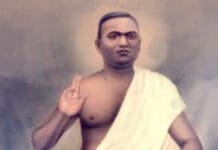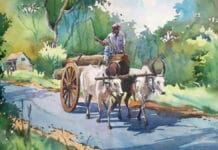Nehru and Science in the Age of Coronavirus is a significant work that revisits the scientific vision of Jawaharlal Nehru, India’s first Prime Minister, in the context of the COVID-19 pandemic. Santosh Paul, a Senior Advocate at the Supreme Court of India and Dr Harsh Hegde, an Executive Director (Orthopaedics) at Fortis Escorts, explore Nehru’s emphasis on scientific temper and rational thinking as essential tools for nation-building and how these principles are even more relevant in the contemporary age of global health crises. They say that with 4,22,829 infections worldwide and 18,907 deaths and still counting, Nehruvian vision of science and his efforts to create a scientific society have gained immense importance and relevance. According to Jawahar Lal Nehru, science was the major triumph of the human mind, which could liberate humankind from illness, want and misery.
The essay introduces us to the alarming problems we face today, i.e., the increasing number of people infected with the Coronavirus. Nehru’s vision of science and his efforts to create a scientific society have gained immense importance and relevance. According to Jawaharlal Nehru, science was the major triumph of the human mind, and he believed this could liberate humankind from illness, want and misery. This lesson is highly significant and relevant in the current scenario as we are all struck by the Coronavirus and are going through an era of pandemics. In this context, Nehru’s concepts of science become essential.
Nehru believed that only science could solve the problems of hunger and poverty, insanitation and illiteracy, superstition and deadening customs and traditions, and vast resources running to waste in a rich country inhabited by starving people. Nehru offered science as a solution to all the problems we face today.
Scientific temper is a phrase used by Nehru in 1946 in his book The Discovery of India. This phrase denotes an attitude of approaching life and the world by applying one’s critical faculties. The use of rational faculty for observation, analysis, hypothesis, trial and testing and correction in the case of new evidence is the scientific method.
Nehru understood the critical role of scientific temper in nation-building. His interest in science and technology can be traced back to his opting for Science Tripos in Cambridge, and he had associations and friendships with leading British scientists of the age, such as James Jeans and Arthur Eddington.
Creating Scientific Institutions
Nehru played a significant role in establishing many scientific institutions in India. His blueprint was twofold: He wanted to replicate world-class institutions in India. His celebrated visit to the Massachusetts Institute of Technology in 1949 ultimately led to the creation of the five iconic Indian Institutes of Technology in Kharagpur (1950), Bombay (1958), Madras (1959), Kanpur (1959), and Delhi (1961). Now, there are 23 IITs in India.
He could induct or bring the greatest scientific names of the times into nation-building. Vikram Sarabhai, Sir C V Raman, Homi Bhabha, Sathish Dhawan, S S Bhatnagar and many others were to run the premium scientific learning and research institutes. He was influential in the creation of the Department of Atomic Energy (1954), the Bhabha Atomic Research Centre (1954), the Physical Research Laboratory (1947), the Indian Space Research Organization (1962), the Council of Scientific and Industrial Research -CSIR (1942).
Under the stewardship of S S Bhatnagar, Nehru helped set up the National Chemical Laboratory (Pune), the National Physical Laboratory (New Delhi), the Fuel Research Station (Dhanbad), the Glass and Ceramics Research Institute (Calcutta) and the National Metallurgical Laboratory (Jamshedpur). Nehru believed that there is no boundary for science. Equally important was the role of scientific temper in nation-building, i.e., we have to develop a positive attitude towards scientific advancements.
Nehru’s idea of public institutions adopting the utilitarian principle of the greatest good to the most significant number assumes significance. In the post-independence period, the government’s socialist policies made revolutionary attempts and mass campaigns to eradicate smallpox, polio, and plague and prevent the growth of many other deadly diseases. The levels have decreased tremendously with the introduction of different plans and methods to eliminate such epidemics.
In 1951, smallpox-related deaths totalled 1,48,000, and in a span of 10 years, they were reduced to 12,300. Every five-year plan began to dedicate more resources to fighting these epidemics. The plague, which accounted for 3 per cent of deaths around 1940, was completely eradicated by the middle of the 1950s.
Efforts were being made to control endemic venereal diseases, leprosy, filariasis, diphtheria, typhoid, whooping cough, pneumonia, meningitis, and rabies. These diseases were brought under control by public healthcare systems, accessible and affordable medicine, and widespread government-initiated vaccination programs. The importance of public healthcare systems is underlined here.
The essay also emphasises the need to build new medical colleges, upgrade existing ones, and attract a more significant number of medical practitioners. The number of medical colleges rose from 15 in 1946 to 81 in 1965, and the number of students admitted also increased.
Nehruvian influence in policymaking is visible in different parts of our country as the world fights the deadly pandemic. Nehru’s optimism and faith in man’s quest for science will always ring a bell in this age of Coronavirus. He was aware of the wonders that human beings could do. In Glimpses of World History in 1934, Nehru wrote to his daughter, “Sanitation and health and the conquest over some diseases depend on science”.
Nehru was influential in the establishment of institutions relating to medical science. The All India Institute of Medical Sciences (New Delhi) was set up in 1956, Maulana Azad Medical College (New Delhi) in 1958, Govind Ballabh Pant Institute of Postgraduate Medical Education and Research (New Delhi) in 1961, the National Institute of Virology in 1952. Nehru placed his faith in science, and the scientific institutions that he built with the help of the ablest of men of his time stand as a testimony to his contribution to the advancement of science in India. These institutions will help us to confront and overcome this devastating pandemic.
Nehru’s Vision of Science
Nehru regarded science and technology as crucial to the development of an independent and modern India. He believed in fostering a scientific temperament among citizens, which involved an attitude of curiosity, scepticism, and reliance on evidence-based reasoning. The article highlights how Nehru’s vision laid the groundwork for India’s scientific institutions and infrastructure, which have played a vital role in responding to crises like the COVID-19 pandemic.
Science and Rationality in Public Discourse
The authors discuss the importance of scientific rationality in public discourse, especially during times of crisis. Nehru’s advocacy for a society guided by reason and scientific inquiry is contrasted with the rise of misinformation and anti-scientific attitudes during the pandemic. The work calls for a revival of Nehruvian principles in contemporary times, emphasising that scientific understanding should guide public policy and individual behaviour.
The Role of Scientific Institutions
The article examines the legacy of Nehru’s establishment of scientific institutions, such as the Indian Institutes of Technology (IITs) and the Council of Scientific and Industrial Research (CSIR), which have been instrumental in India’s fight against COVID-19. The discussion extends to how these institutions have evolved and adapted to address the challenges of the pandemic, including vaccine development and public health measures.
Nehru’s Legacy in the Age of Coronavirus
Paul and Hegde reflect on how Nehru’s foresight in prioritising science and technology has empowered India to handle the complexities of the pandemic. The narrative emphasises the continued relevance of Nehru’s vision in ensuring that scientific research and innovation are at the forefront of national development and crisis management.
Science and Public Policy
The article delves into the intersection of science and public policy, advocating for policies informed by scientific research and data. Nehru’s belief in a progressive and scientifically informed government is presented as a model for contemporary governance.
Challenges in Upholding Scientific Temper
Despite Nehru’s efforts, the article discusses the challenges in sustaining a scientific temper in India, especially during crises when fear and misinformation can dominate. The authors argue for more robust educational initiatives and public engagement to reinforce the values of critical thinking and evidence-based decision-making.
Nehru and Science in the Age of Coronavirus is a timely exploration of Nehru’s enduring legacy in science and technology. By revisiting Nehru’s ideals, the article advocates for a society that values scientific temper and rationality, especially in the face of global challenges like the COVID-19 pandemic. It serves as a reminder that the foundations laid by Nehru continue to be vital in navigating contemporary crises and underscores the importance of science as a pillar of national resilience and progress.




























